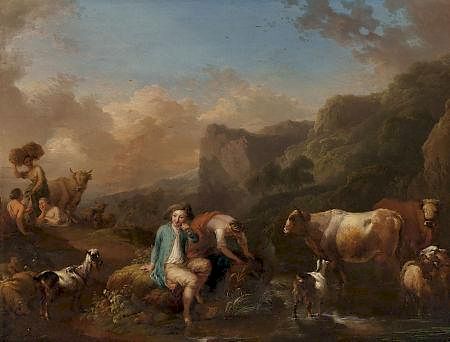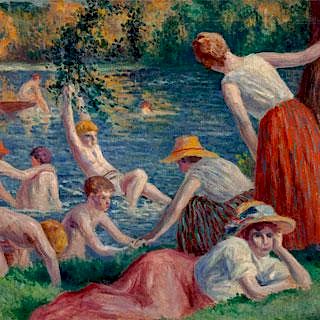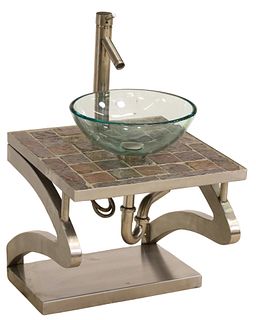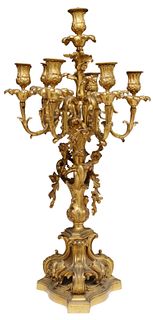Christian Wilhelm Ernst Dietrich (German, 1712-1774) An Italianate Landscape
Lot 66040
Categories
Estimate:
$30,000 - $50,000
Absentee vs Live bid
Two ways to bid:
- Leave a max absentee bid and the platform will bid on your behalf up to your maximum bid during the live auction.
- Bid live during the auction and your bids will be submitted real-time to the auctioneer.
Bid Increments
| Price | Bid Increment |
|---|---|
| $0 | $1 |
| $10 | $2 |
| $50 | $5 |
| $100 | $10 |
| $200 | $20 |
| $500 | $50 |
| $1,000 | $100 |
| $2,000 | $200 |
| $5,000 | $500 |
| $10,000 | $1,000 |
| $20,000 | $2,000 |
| $50,000 | $5,000 |
| $100,000 | $10,000 |
| $200,000 | $20,000 |
| $500,000 | $50,000 |
| $1,000,000 | $100,000 |
| $5,000,000 | $250,000 |
| $10,000,000 | $500,000 |
About Auction
By Heritage Auctions
Dec 9, 2015 - Dec 10, 2015
Set Reminder
2015-12-09 12:00:00
2015-12-10 12:00:00
America/New_York
Bidsquare
Bidsquare : European Art
https://www.bidsquare.com/auctions/heritage/european-art-1132
Heritage Auctions Bid@HA.com
Heritage Auctions Bid@HA.com
- Lot Description
Christian Wilhelm Ernst Dietrich (German, 1712-1774)
An Italianate Landscape with Figures Resting by a River with Cattle and Goats Watering; An Italianate Landscape with Figures before a Ruin (a pair), 1744
Oil on board
10-3/4 x 14 inches (27.3 x 35.6 cm)
Each signed, inscribed and dated, one at lower center, the other at lower right: Dietrichy fecit 1744; Dietrich ft.174[..]
Each stenciled verso: L.1161; L.1162
Each bears abraded wax seals verso
PROVENANCE:
Unidentified collection, 1808, dated inventory numbers 125 and 126 (labels verso);
Königliches Museum, Berlin, Germany, acquired in 1853 by museum director Gustav Friedrich Waagen-until 1937;
German Embassy, London, England, 1937-1945;
Allied Forces, seized from the above in 1945 and auctioned;
Frost & Reed, London, inventory numbers 6079 and 6080 (labels verso);
Private collection;
Private American collection, 2000-2001;
Sale: Barridoff Galleries, Portland, Maine, August 8, 2001, lot 148;
Private collection, acquired from the above.
EXHIBITED:
A. Roemer Museum, Hildesheim, Germany, no. 1024 (museum label verso; notation on Frost & Reed label verso).
NOTE:
These paintings retain their original eighteenth-century frames.
Immediately following a year-long study trip to Venice and Rome (1743-44), German Rococo painter Christian Dietrich produced this charming pair of rustic Italianate landscapes in Dresden, where he served as court painter to Frederick-Augustus II, Elector of Saxony, who had financed his trip. Painted on chamfered German fir panels, and in a beautiful state of preservation, these companion scenes of figures and animals enjoying a respite along a refreshing stream merge the corpus of 17th and 18th-century stylistic influences Dietrich routinely drew upon for inspiration.
The intimate scale and attention to small details of gesture, costume and anecdote (such as the little leaping dog) reflect Dietrich's intense admiration for Dutch 17th-century painting, notably the "Little Masters" whose work he seems to have come into firsthand contact with on a trip to the Netherlands in the mid-1730s. Specifically, the construction of the settings for the figures and animals amidst prominent ruins washed with a golden light, and the saturated expanses of blue sky framed by rings of bold and ruddy cloud formations betray his personal artistic preference for the Dutch Italianate painters such as Berchem, Both and Cuyp. Judging from the level of painterly attention paid to the skies in these works, Dietrich's recent (and only) sojourn to Italy seems to have intensified his predilection for the Dutch Italianates.
The gentle pastel palette and delicate feathery touch, however, together with the lighthearted character of the figures, divulge Dietrich's enormous debt to the work of Watteau. These figures exist in a place that has just as much in common with Watteau's fêtes champêtres as they do Berchem's picturesque ruins. Moreover, Dietrich artfully infuses a decorative breeziness into the mix, which has its roots in his early work as a set designer with landscape painter Johann Alexander Thiele, as well as the decorative interior work he produced for Heinrich, Graf von Brühl.
In many ways, Dietrich's success during his lifetime was linked intricately to his eclecticism. Being able to adopt the painting styles of so many of his artistic models, and still retain the stamp of his own individuality, Dietrich was responding to 18th-century artistic theorists' requirements concerning selection and imitation. His variety of styles found wide commercial appeal, and he maintained a prolific output throughout his life-even when he was tapped to assume prize administrative posts as Inspector of the Gemäldegalerie in Dresden in 1748, and Professor of Landscape Painting at the newly founded Akademie der Bildenden Künste in Dresden in 1763, the same year he assumed the directorship of the Kunstschule at the Meissen porcelain manufactory.
The present works of 1744 mark the beginning of the Dietrich's international artistic success which extended throughout Europe through the 1660s.
These paintings have been checked against the Art Loss Register database, and are not listed. Although the paintings were removed from the Berlin Museum during World War II, and confiscated by the Western Allies when the German Embassy in London was seized at the conclusion of the war, the Stiftung Preussischer Kulturbesitz/Staatliche Museen zu Berlin has officially relinquished all claims to these paintings, and their title is free and clear.
Dimension
Height: 1075.00Width: 1400.00Paint film in a fine state of preservation. Hand-planed oak panels. There appears to be light surface grime with a few areas of faint craquelure scattered throughout both works; in work with young boy in blue, there appears to be a few tiny possible accretions in sky at center top edge as well as two bumps at center top edge; in work with woman in blue, there appears to be tiny bump at center top edge with related hairline approx. .25 inch crack in panel; extremely minor edge wear with possible accretion along lower right edge; both works are contained within their original frames. Framed Dimensions 16.5 X 19.75 InchesCondition
- Buyer's Premium



 EUR
EUR CAD
CAD AUD
AUD GBP
GBP MXN
MXN HKD
HKD CNY
CNY MYR
MYR SEK
SEK SGD
SGD CHF
CHF THB
THB


















